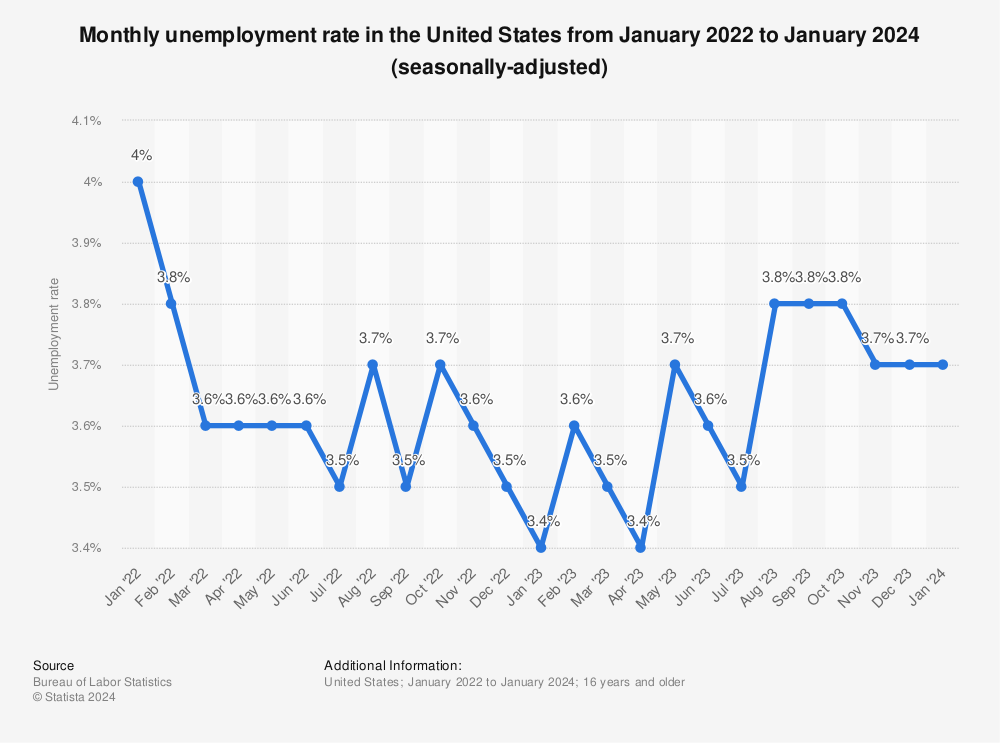Spring Into Staffing: Current Staffing Industry Trends
Strategic Insights for Staffing Firms in a Shifting Landscape
The staffing industry is the glue between employees and employers, offering a vital service in times of labor shortages and economic uncertainty. As we enter a new season, staffing professionals should take note of the recent landscape, such as the Big Stay phenomenon, and the economic situation to intuit what’s to come and how to stay ahead of the curve. Here is what we see playing into the next few months…
The Economic Outlook for Staffing Agencies
Despite persistent inflation, there's a glimmer of hope on the horizon as the Federal Reserve plans planning to make three quarter-point cuts in 2024. This move aims to mitigate inflationary pressures, potentially leading to a softer inflation trajectory. However, the cost of labor continues to rise, posing challenges for employers and staffing agencies.
According to the Federal Reserve's December 2023 session, the Fed forecasts making three quarter-point cuts by the end of 2024 to lower the benchmark rate to 4.6% (source: US News).
The expected decrease in inflation due to these rate cuts could help ease some of the difficulties that both businesses and staffing agencies are dealing with. When inflation is more stable, companies tend to feel better about growing their business and hiring new employees.
It's important to know that the impact of these rate cuts won't be the same for every industry or area. Some sectors like technology and healthcare might see strong growth and lots of demand for skilled workers. On the other hand, other industries might still struggle because of bigger changes happening in the economy worldwide.
The Employment Situation
The labor market remains tight, bolstering employment opportunities. However, there are signs of slowing momentum, with unemployment rates inching upwards. This deceleration in hiring activity may partly be attributed to the "Big Stay" phenomenon, wherein employees are opting to remain in their current roles rather than seek new opportunities. Notably, quit rates stood at just 2.1% in January, underscoring this trend
According to the recent release of the Employment Situation Report, the unemployment rate rose slightly to 3.7% in January compared to the previous month. However, this growth is slower compared to previous months, suggesting a potential deceleration in hiring activity. For staffing firms, these key takeaways highlight the ongoing challenges and opportunities in navigating the evolving labor market landscape. While the rise in unemployment may indicate a larger pool of available talent for recruitment, the slower pace of job growth underscores the importance of strategic workforce planning and adaptability. Staffing firms must stay agile in responding to shifting demand, leveraging data-driven insights to identify emerging opportunities and optimize their recruitment strategies accordingly.

Looking at the health of the current job market, it’s time for your staffing company to spring into action and get serious about sourcing top tier talents and nurturing the relationships with the front runners already in your network. Do those candidates have a contract coming to an end? This is the time to utilize your redeployment strategy, repurposing top talent in new roles and asking them for referrals.
Recent Trends & Forecasts
Remote Work: The shift towards remote and hybrid work arrangements continues to gain traction. In 2023, many businesses adopted hybrid models, offering flexibility to employees transitioning back to in-person work. This trend is likely to persist in 2024, with only 38% of companies mandating full in-office workweeks.
Utilizing AI for Recruiting in 2024: The integration of AI into staffing processes has been steadily increasing. In October 2023, 63% of surveyed staffing firms reported implementing AI, primarily for internal efficiency purposes. This year, we can expect deeper integration of AI into candidate sourcing and matching processes, empowering agencies to stay competitive.
As we approach spring, the widespread adoption of AI among staffing firms marks a pivotal moment in the industry. With most firms already leveraging AI in their hiring processes, we anticipate significant improvements in efficiency and candidate quality. This spring, the integration of AI technology promises enhanced solutions for clients and talent, ensuring firms remain competitive in an ever-evolving market.
Key Takeaways:
- Inflation and wage pressure highlight the importance of nurturing recent and long-standing placements for retention.
- Assess whether placements prefer remote or hybrid work models offered by clients.
- Keeping current placements satisfied is crucial, particularly if clients can't raise wages.
- Consider exploring AI solutions if recruiters face challenges in placing strong candidates.
Staffing firms should prioritize nurturing existing placements, understanding their preferences, and exploring AI solutions to address recruitment challenges in the face of inflation and wage pressure.
Springing Ahead:
For staffing firm owners and executives looking to further refine their strategies and ensure their agencies are not just surviving but thriving, we recommend diving into our focused series of resources designed to enhance your firm's readiness for growth, renewal, and goal achievement:
-
Spring Into Staffing: How Staffing Firms Can Prepare for Growth offers critical insights into preparing your firm for the opportunities that lie ahead. This resource is invaluable for those looking to lay a robust foundation for expansion and scalability.
-
Spring Into Staffing: Strategies for Contract Renewal and Growth delves into the nuances of contract renewal as a pivotal strategy for fostering sustainable growth and deepening client relationships. It's a must-read for firms aiming to solidify their market position and ensure client loyalty.
-
Spring Into Staffing: Goal Setting provides a detailed guide on setting achievable, impactful goals that align with your firm's growth aspirations and market realities. This piece is essential for creating a clear roadmap for success in the face of industry trends.
- Log in to post comments



